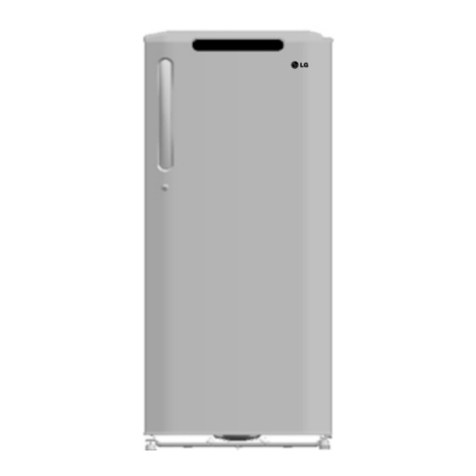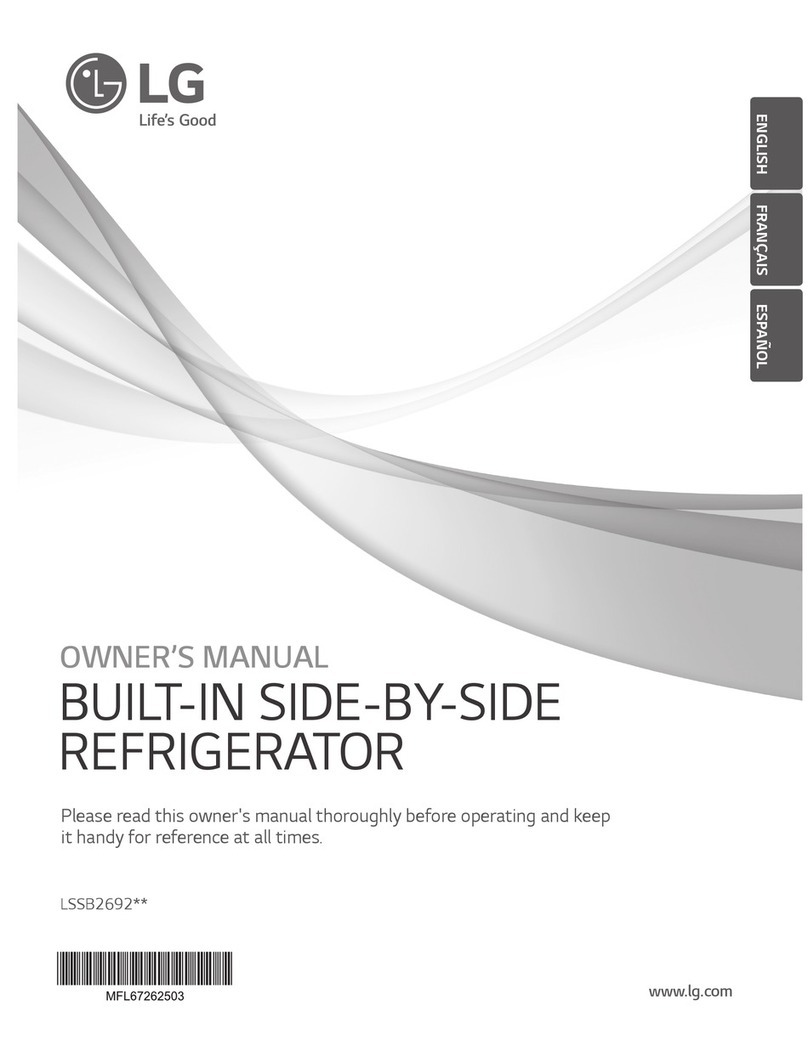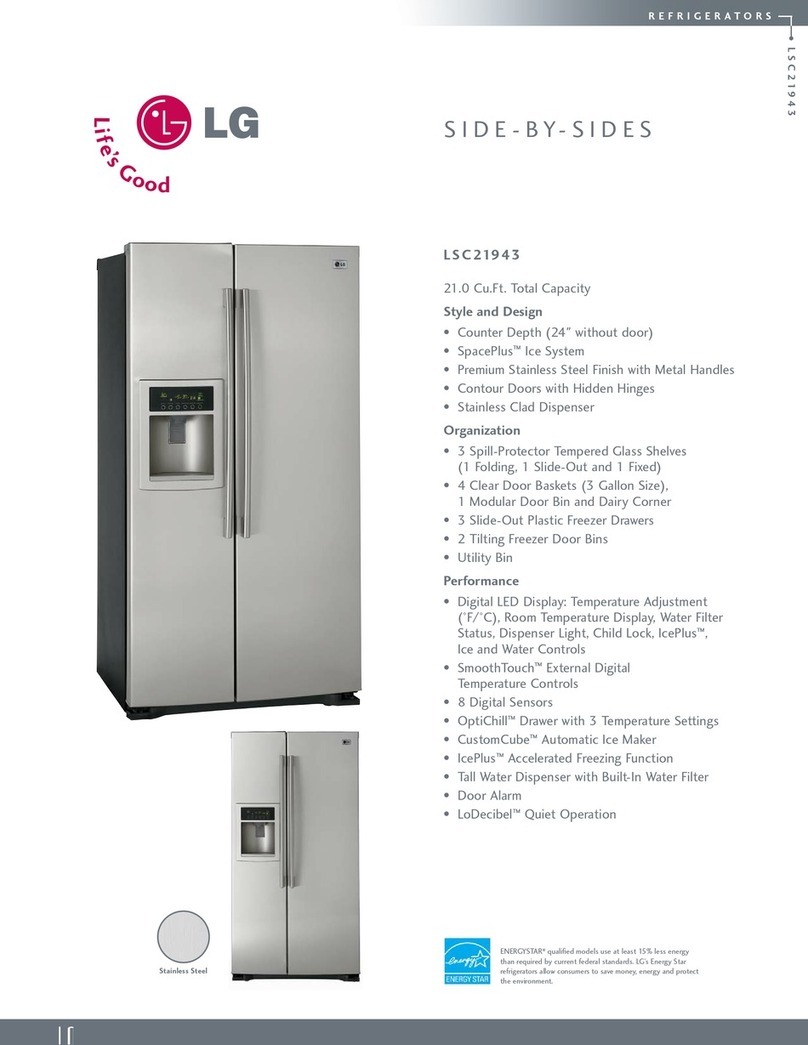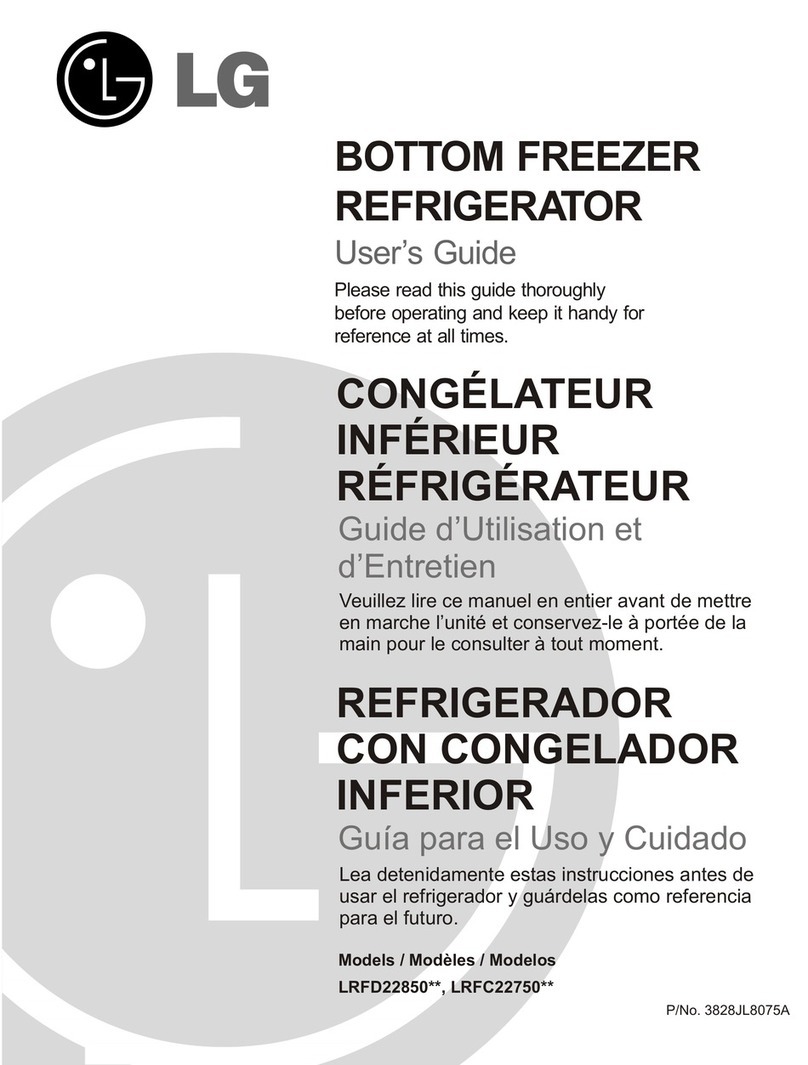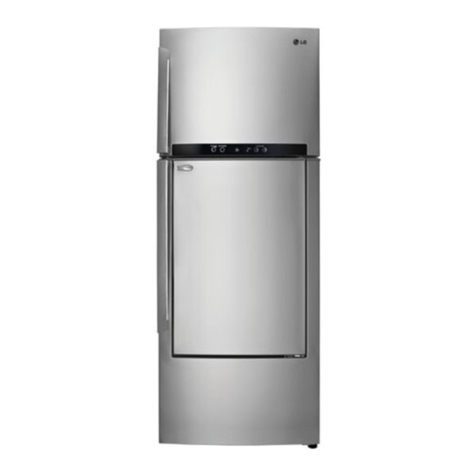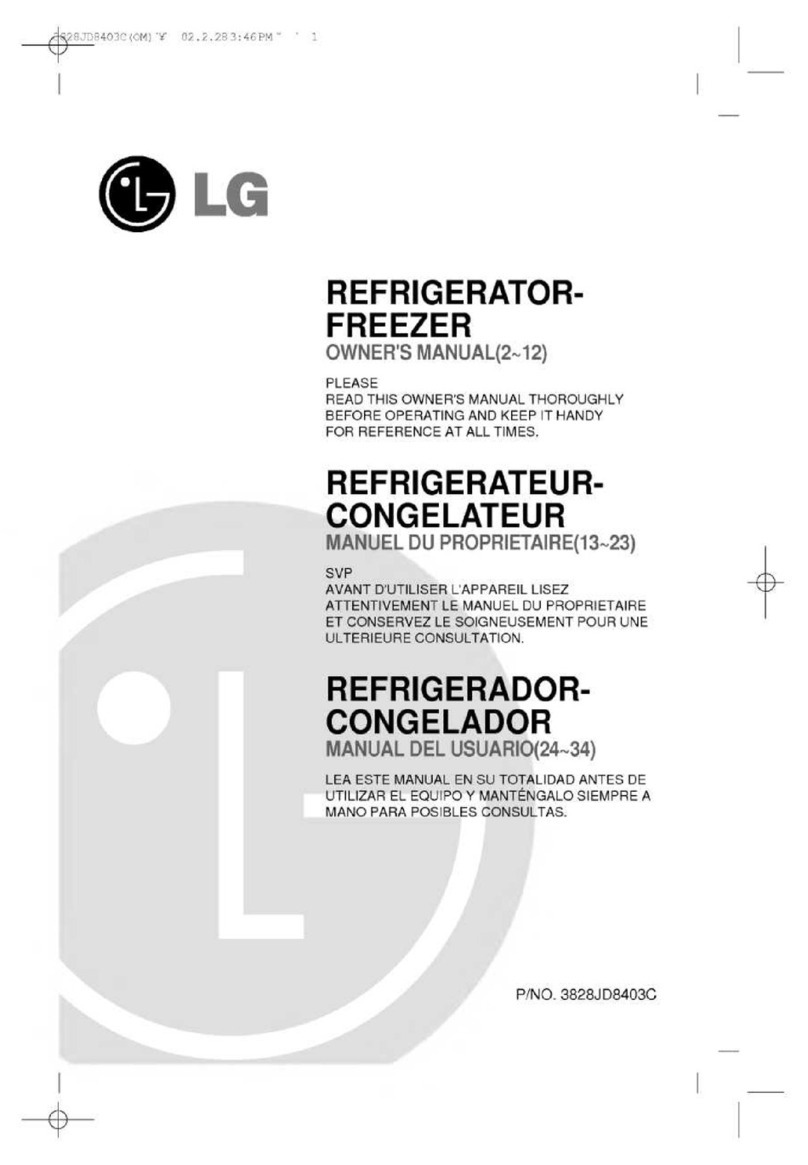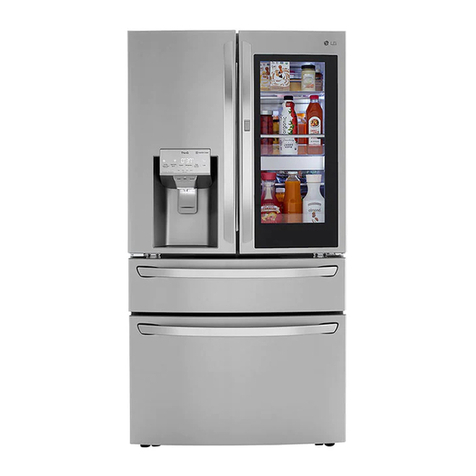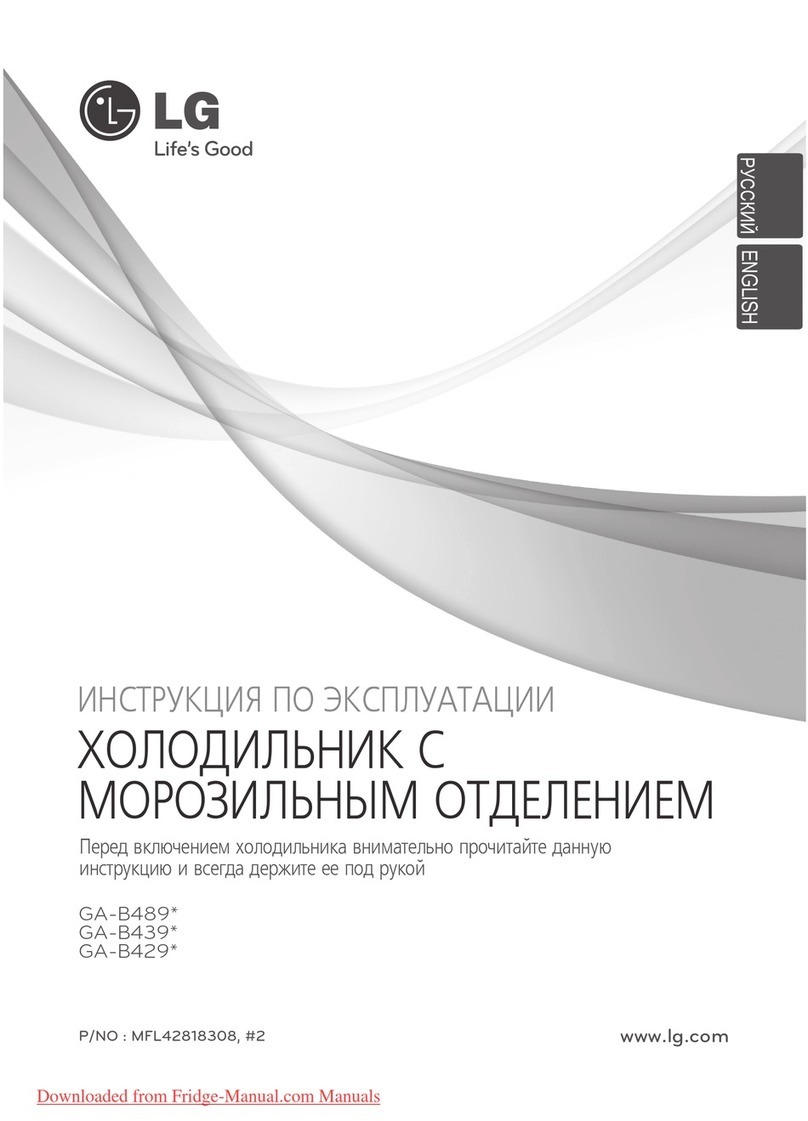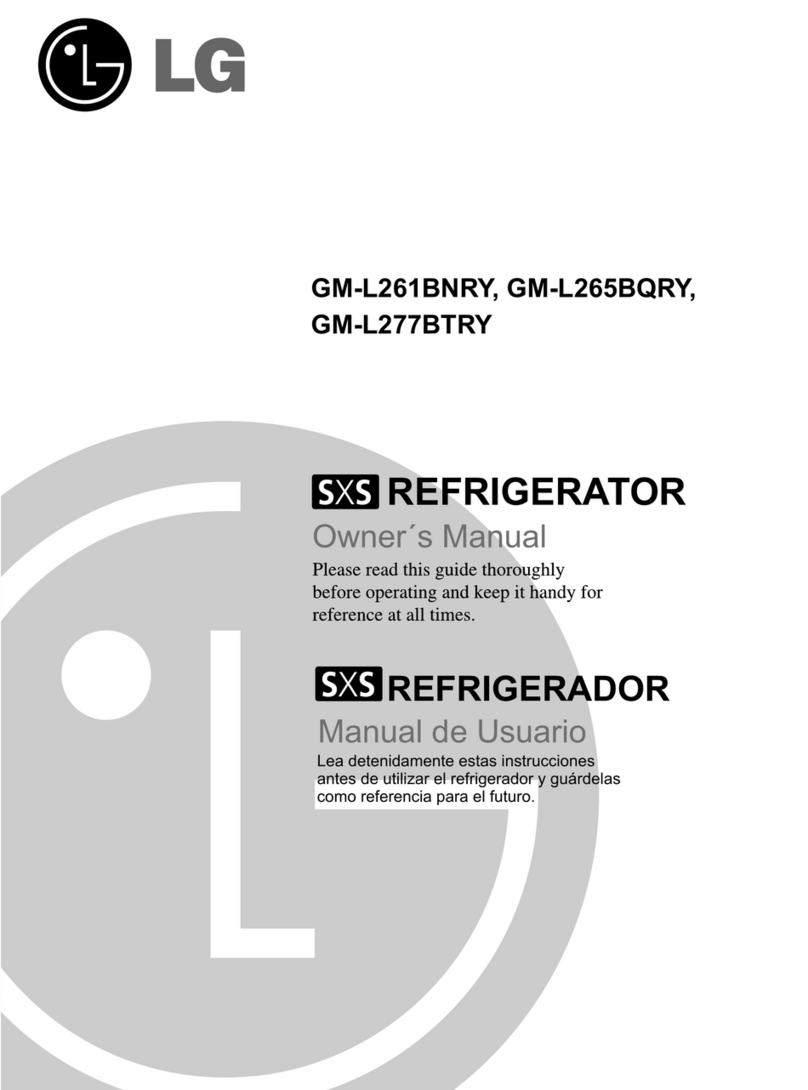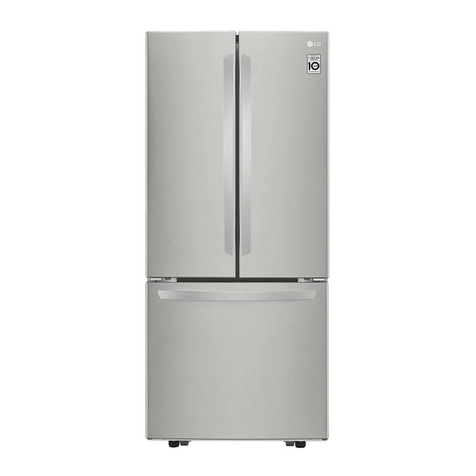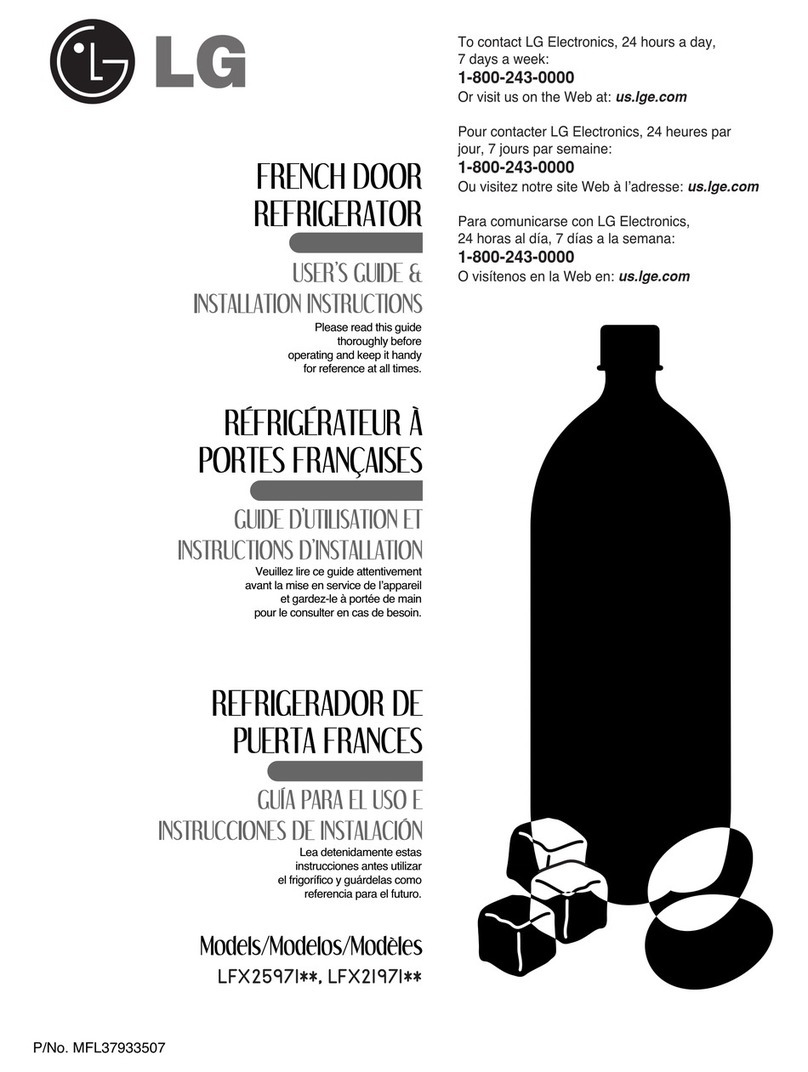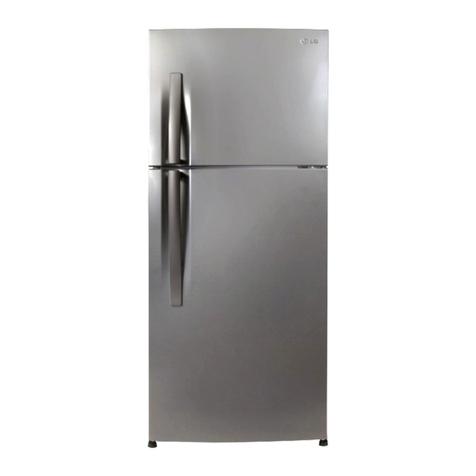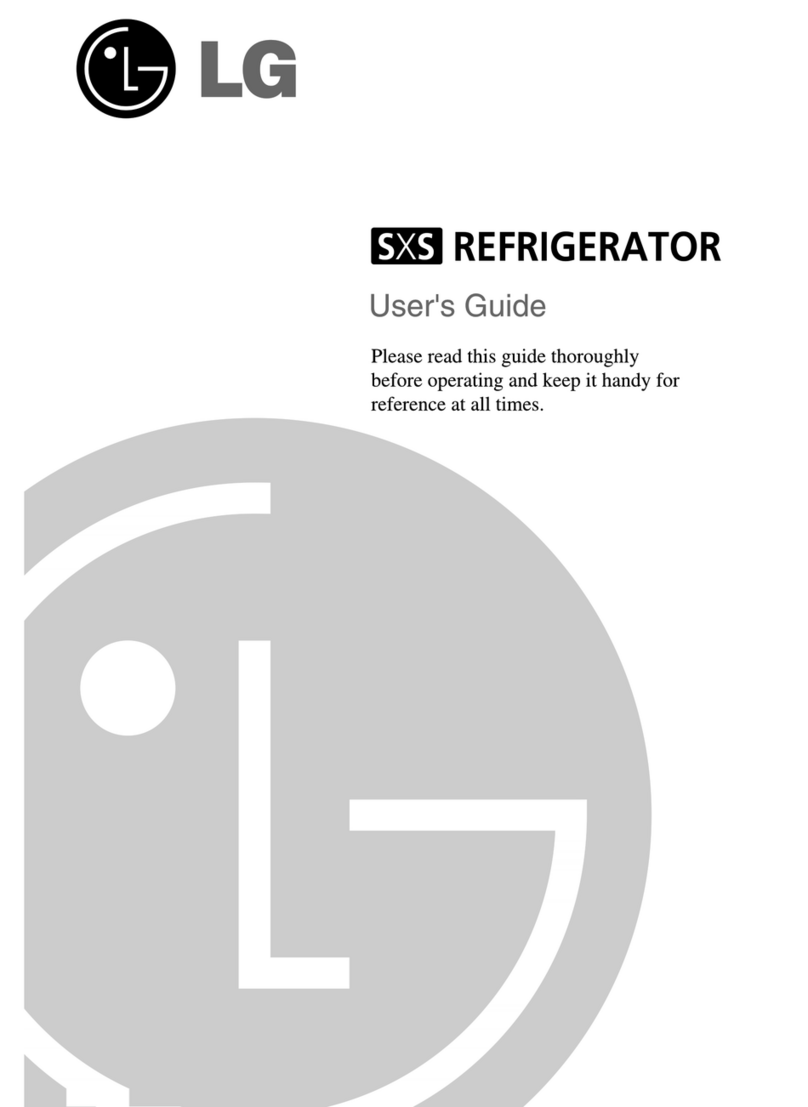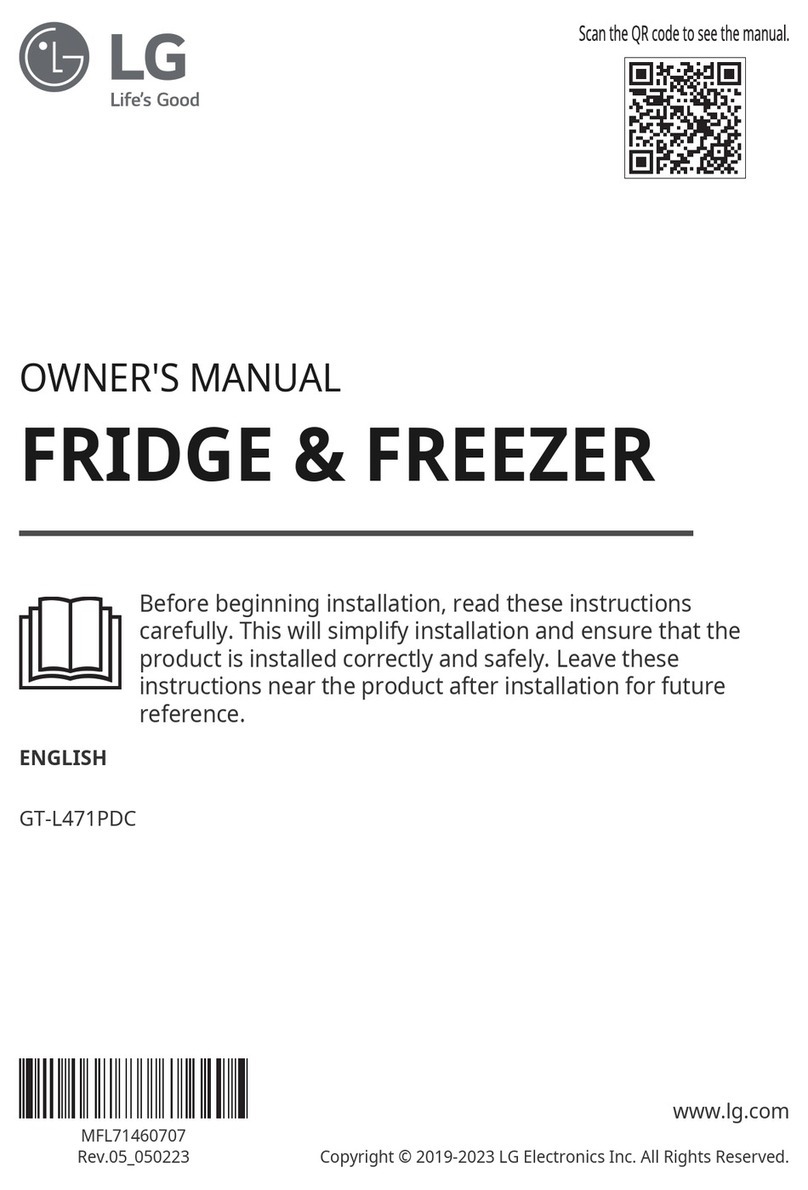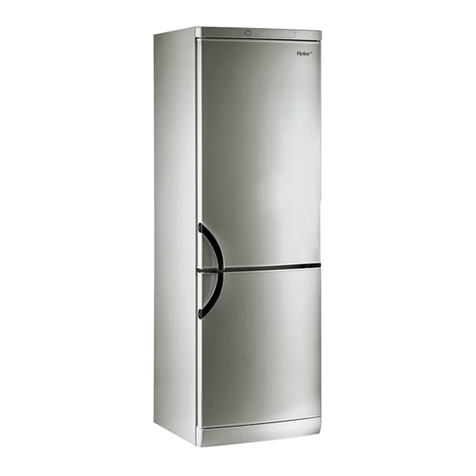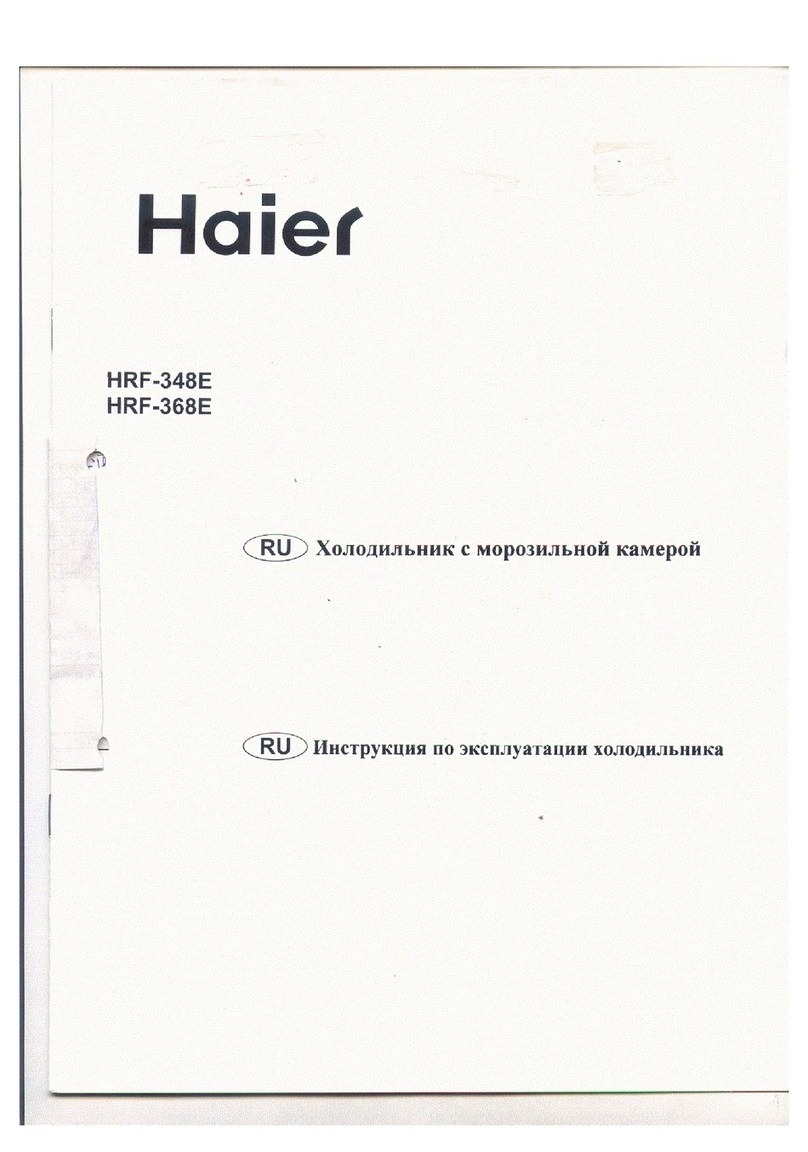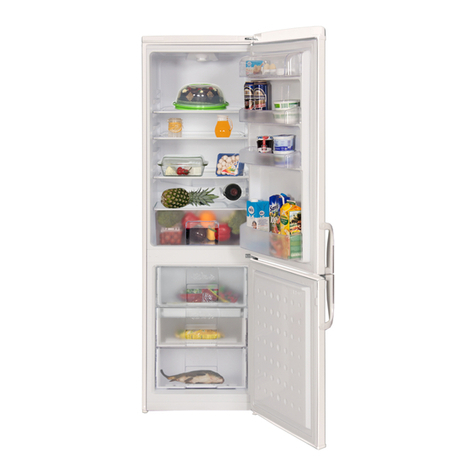4
Remove tape and any temporary labels from your
refrigerator before using. Do not remove any
warning type labels, the model and serial number
label, or the Tech Sheet that is attached to back
wall of the refrigerator.
To remove any remaining tape or glue, rub the
area briskly with your thumb. Tape or glue residue
can also be easily removed by rubbing a small
amount of liquid dish soap over the adhesive with
your fingers. Wipe with warm water and dry.
Do not use sharp instruments, rubbing alcohol,
flammable fluids, or abrasive cleaners to remove
tape or glue. These products can damage the
surface of your refrigerator. For more information,
see Important Safety Instructions in the
Refrigerator Safety section.
Refrigerator shelves are installed in the shipping
position.
Please reinstall shelves according to your
individual storage needs.
1. Avoid placing the unit near heat sources, direct
sunlight, or moisture.
2. To avoid vibration, the unit must be level. If
required, adjust the leveling screws to
compensate for unevenness of the floor.
The front should be slightly higher than the rear
to aid in door closing.
Leveling screws can be turned easily by tipping
the cabinet slightly.
Turn the leveling screws clockwise ( ) to
raise the unit, counterclockwise ( ) to
lower it.
3. Install this appliance between 55 °F (13 °C)
and 110 °F (43 °C.) If the temperature around
the appliance is too low or high, cooling ability
may lessen.
NEXT
1. Clean your refrigerator thoroughly and wipe off
all dust accumulated during shipping.
2. Install accessories such as ice cube bin,
drawers, shelves, etc., in their proper places.
They are packed together to prevent possible
damage during shipment.
3. Let your refrigerator run for 2 or 3 hours before
putting food in it.
Check the flow of cold air in the freezer
compartment to ensure proper cooling.
Your refrigerator is now ready for use.
INSTALLING YOUR
REFRIGERATOR
WARNING
Excessive Weight Hazard
Use two or more people to move and
install refrigerator.
Failure to do so can result in back or
other injury.
When Moving Your Refrigerator:
Your refrigerator is heavy. When moving the
refrigerator for cleaning or service, be sure to
protect the floor.
Always pull the refrigerator straight out when
moving it.
Do not wiggle or walk the refrigerator when
trying to move it, as floor damage could occur.
WARNING
Explosion Hazard
Keep flammable materials and vapors,
such as gasoline, away from refrigerator.
Failure to do so can result in death,
explosion, or fire.
Installation
Unpacking Your
Refrigerator
